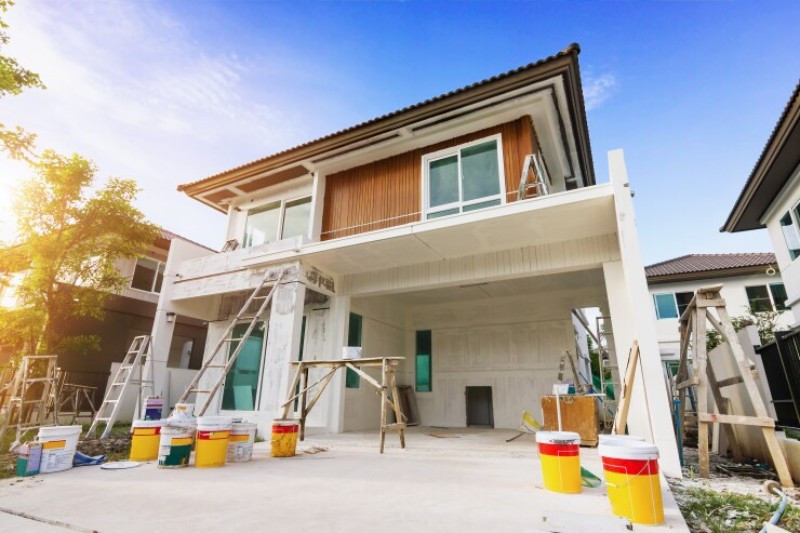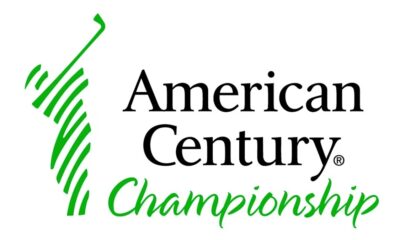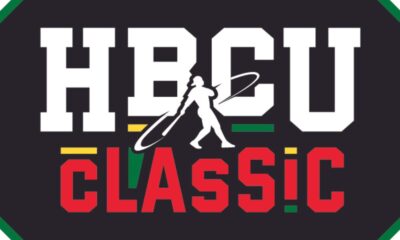Lifestyle
How Much Does It Cost for Improvements and Renovations of a Home?

Home renovations can help you stay longer in a house or neighborhood you love, save money over time, and, hopefully, lessen stress. You can have a trendy kitchen with a beverage station and quartz countertops, or you can improve the structure and safety of your home.
Whatever the changes you plan to make, cash savings, home equity or improvement loans, and even some alternative financing options are just a few of the many ways homeowners can help pay for renovations and home improvements. Your plans and financial situation will ultimately determine which payment option is best for your renovation.
What Is the Price of Home Renovations?
Homeowners can utilize some estimates to help with planning, but budgets for improvements and renovations are as unique as a fingerprint.
With the top 10% of homeowners spending up to $100,000, the median amount spent in 2021 on home improvements and renovations was $18,000.
Keep in mind that price increases for materials are also possible when there is high or rising inflation, as we have since 2021.
Don’t worry if you feel your palms getting wet. Allowing yourself to part with those vintage vinyl records is not the only way to finance your next home improvement project. Let’s get started.
How to Get the Money for Your Improvements or Renovations
- Cash
- Home Improvement Loan
- Cash-Out Refinance
- Home Equity Loan
- Home Equity Line of Credit (HELOC)
- Title I Property Improvement Loan Program
- 203(k) Rehabilitation Mortgage Insurance Program
- Crowdfunding
- Peer-to-Peer Lending
- Community Grant
Cash
Making cash payments for your home improvements is always the most affordable option. It doesn’t affect your credit score, saves money on interest, and doesn’t require collateral.
It might take some time to save for your home improvement project unless you are independently wealthy, but that will give you more time to plan.
Home Improvement Loans
Homeowners can finance renovation projects without putting their houses up for collateral thanks to home improvement loans. However, repayment terms for this kind of loan are frequently shorter and interest rates are typically higher than those on secured loans, like home equity loans or home equity lines of credit (HELOC), because the loan is not secured.
To begin the application process for a home improvement loan, borrowers should visit their bank or another preferred lender. Once the lender determines that your credit score satisfies their requirements, they will give you the loan terms. A homeowner’s interest rate will be determined by their creditworthiness.
Cash-Out Refinancing
Another option available to homeowners to finance home improvements is a cash-out refinance. To pay off their previous mortgage, homeowners take out a new, larger one. A portion of the difference is then used to cover closing costs. The remaining funds are theirs to do with as they please after closing costs.
Home Equity Options
For homeowners whose homes are worth more than they owe on them, home equity options such as home equity loans and home equity lines of credit (HELOCs) are excellent.
Households can borrow up to a certain amount (often 80%) against the value of their home through home equity loans and home equity lines of credit (HELOCs), using their house as collateral. Higher interest rates are typically associated with non-collateralized home improvement loans; this is because home equity loans and HELOCs are secured loans.
The homeowner receives an upfront lump sum for their intended use, in this case, improvements and renovations, with a home equity loan, which is arranged by the borrower and lender. Payments are predictable because the homeowner receives fixed interest rates. For price-conscious homeowners, these loans are good choices.
HELOCs are revolving credit lines that lenders grant to borrowers, with the borrowing limit being something that homeowners are not allowed to go over. In a “draw period,” homeowners have the option to take out all or part of their permitted credit, with payments calculated using a variable interest rate.
Because each line of credit draw adds to the total amount owed, interest is applied to the outstanding balance, and because the interest rate may fluctuate, HELOC repayments are not set in stone. This might be detrimental in a market where interest rates are rising.
Personal Loans
A personal loan might be a better choice for homeowners who want to finance smaller home improvements. Collateral cannot be required for personal loans, and creditworthiness determines interest rates. The borrowers with the best credit will receive the most advantageous interest rates.
Homeowners can benefit from fixed repayment terms for personal loans with fixed interest rates. Additionally, borrowers need to keep in mind that interest rates on personal loans have increased over the last two years, and that means higher monthly payments.
Credit Cards
Credit card financing for home improvement projects may seem like a crazy idea, but there are some situations where it might make sense. Homeowners should make plans for debt repayment before using credit cards to finance renovations.
High-value point rewards and introductory interest-free periods are features of numerous credit cards. However, using credit cards to pay for home improvements entails some risk for homeowners. Until the offer period expires, you won’t be charged finance charges with a 0% APR card. Make sure you pay it off in a timely manner because interest will start to accrue on the subsequent billing cycle.
Government Programs and Grants
Homeowners with low equity have access to a few options from the government. For those who qualify, these government grants and programs are worth looking into despite being location- and need-based.
Usually, eligibility is determined by:
- Age
- Income
- Property type
- Location
Title I Property Improvement Loan Program
Federal Housing Administration (FHA)-backed private lenders provide Title I Property Improvement Loans. They are intended to be utilized for any remodeling or enhancement that results in a more comfortable home. Homeowners are not permitted to use the money for luxuries like a pool or hot tub.
Interest rates on these loans are typically lower than those on other unsecured home improvement loans because the U.S. government is guaranteeing them in good faith.
203(k) Rehabilitation Mortgage Insurance Program
Under the 203(k) program, homeowners can finance minor home improvements or renovations up to $35,000 into their existing mortgage. If a homeowner is making repairs, getting ready to sell their house, or just making it more livable and they don’t have any equity to borrow against, they may use these loans.
Alternative Financing Options
There are still other options available if none of those seem like a good fit.
Crowdfunding
Websites that let homeowners share their stories and solicit donations to help with repairs are popping up all over the internet, even though they might seem unconventional. It’s known as crowdsourcing.
Peer-to-peer lending
Online platforms that facilitate peer-to-peer lending pair borrowers with lenders. Examples of these include Funding Circle, Prosper, Upstart, and Lending Club. When compared to traditional lending channels, peer-to-peer lending takes place outside of financial institutions and facilitates much faster money receipt.
Community Programs
Your eligibility for community grants or programs may depend on where your home is located. Many low-income or destitute families receive grants. Notwithstanding, certain populations—veterans, the elderly, people living in rural areas, and those with disabilities, to mention a few—are eligible for certain grants.
The best place to start is with an internet search to find out what options are available within your county, as every community offers a different set of programs. It is wise to confirm the legitimacy of the program with your local government before signing any documents.
Considerations and Tips for Financing Home Renovations
A well-thought-out plan must be created before beginning any home renovation. Although plans are subject to change, it is essential to have a starting point as it will aid in creating a timeline and budget.
An independent Houzz study found that 34% of homeowners go over budget when projects take longer than expected due to unforeseen construction problems, growing expenses for services or supplies, or incorrect calculations. You can avoid incomplete projects or the need to make compromises by planning ahead and not using every cent of your initial estimates.
You can choose to do it yourself, hire a contractor, or do both after you’ve set a budget and timeline. Additionally, you can focus on the financing options that work best for you.
Now is a great time to get an updated credit report if you plan to borrow money so you can see where your credit profile (and score) stands. Understanding is power, particularly when interacting with lenders.
What Is the Most Expensive Part of Remodeling a House?
Bathrooms and kitchens usually require the most resources and time to renovate, aside from building an addition to your house. With the most fixtures and appliances, bathrooms and kitchens are the most. It is also possible that additional, unforeseen renovation requirements may arise in areas where water is present.
How Much Does a Kitchen Remodel Cost?
A modest kitchen renovation that falls somewhere in the middle typically costs $26,790. Kitchen remodeling that is extensive and/or luxurious can cost up to $77,000.
What Is the Difference Between a Home Equity Loan and a Home Equity Line of Credit?
A home equity loan has a fixed interest rate, lump sum amount, and repayment plan that you must adhere to for the duration of the loan. With a home equity line of credit (HELOC), you can borrow money at variable interest rates whenever you need it.
The Final Word
When thinking about remodeling your home, choosing your tile and wall colors are exciting choices, but figuring out how you’re going to pay for the work is the most crucial one.
You should be living in a house that you love, but the best places to start a home renovation project are with a clear understanding of your credit score and mortgage balance, as well as with a budget and desired timeline. For homeowners, there are various financing options available; the best option for you will depend on your financial situation.
-

 Sports4 weeks ago
Sports4 weeks agoAl Ahly vs Inter Miami, 2025 FIFA Club World Cup – Preview, Prediction, Predicted Lineups and How to Watch
-
Health3 weeks ago
Back to Roots: Ayurveda Offers Natural Cure for Common Hair Woes
-

 Tech3 weeks ago
Tech3 weeks agoFrom Soil to Silicon: The Rise of Agriculture AI and Drone Innovations in 2025
-

 Startup4 weeks ago
Startup4 weeks agoHow Instagram Is Driving Global Social Media Marketing Trends
-

 Sports3 weeks ago
Sports3 weeks agoFIBA 3×3 World Cup 2025: Full Schedule, Preview, and How to Watch
-

 Science4 days ago
Science4 days agoJuly Full Moon 2025: Everything You Should Need to Know, When and Where to See Buck Moon
-

 Gadget3 weeks ago
Gadget3 weeks agoThings to Know about Samsung Galaxy S26: What’s New and What’s Next
-

 Sports4 weeks ago
Sports4 weeks agoWorld Judo Championships 2025: Full Schedule, Date, Time, Key Athletes and How to Watch













